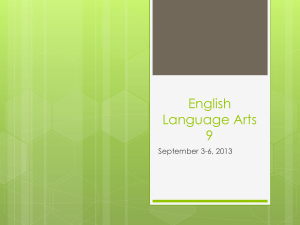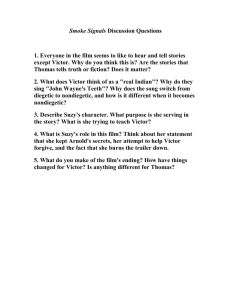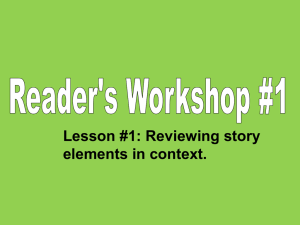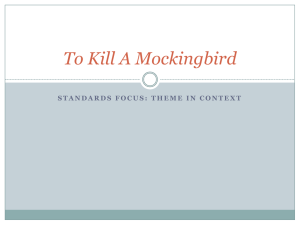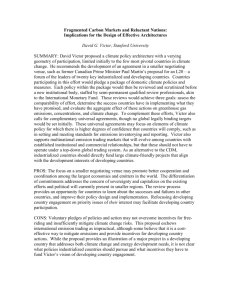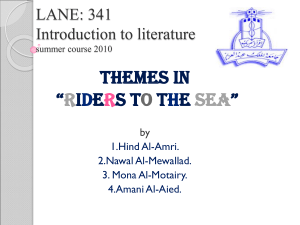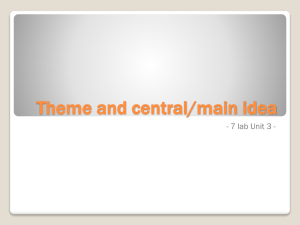Seventh Grade Worksheets: Vocabulary, Setting, Theme
advertisement
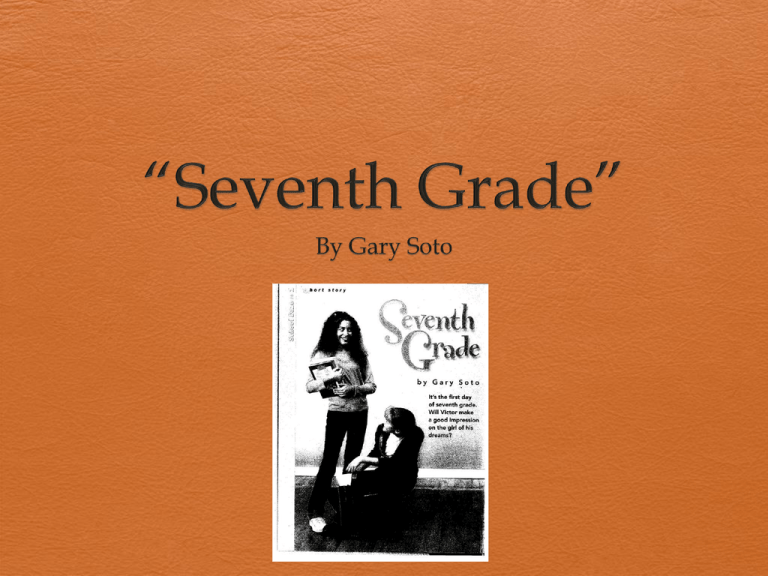
Before Reading: Connect to Your Life Title the first page of your Literature Notebook “Seventh Grade.” Beneath the title, answer the following questions using at least one complete sentence for each question. The questions may require more than one sentence. How do 7th graders try to impress each other? Do you behave differently with boys than you do with girls? Explain. Be prepared to share your answers with a partner and then with the class. Before Reading: Learn Vocabulary Context Clues Words surrounding an unfamiliar word that enable the reader to determine its meaning. Example: Uncle Miguel, the family raconteur tells wonderful stories about his travels. Some people shrink from the thought of adventures. Our dauntless uncle, however, welcomes new challenges. “People fear only the things they don’t understand,” he says. Raconteur: Dauntless: Complete the Vocabulary Building worksheet in your packet with a partner. Before Reading: Learn Vocabulary Bluff Elective Linger Quiver Sheepishly Conviction Ferocity Portly Scowl Trudge Reading 1: Setting Write down your personal definition of setting in your literature notebook. (Do not use your book or any other source.) Read the Building Background section on page 20 in your literature book. Under your setting definition, list three details about the setting of this story that you think might be important. Then answer the following question in complete sentences. Be prepared to share your answer. How can setting affect the plot of a story? Reading 1: Connecting Connecting with characters in a story helps you better understand the story. When you read, think about ways that you are similar to and different from the characters. Create a chart in your literature notebook similar to the one on page 20 in the Active Reading section. While you read, record similarities and differences between you and Victor, the main character. Group Discussion Questions What is Victor’s attitude in the beginning of the story? What does he want to accomplish? How does Victor try to run into Teresa? What happens when he does run into Teresa? How does Victor’s conduct change as the story progresses? What does Victor decide to do at the end of the story? Why? Reading 2: Setting Setting The time and place where the events of the story occur Includes: Geographic location (city, state or city, country) Historical period (Can be as simple as past, present day, or future) Season Place (more specific than just the geographic location) Weather People Writers often use imagery, or words and phrases that appeal to the senses, to help readers picture the setting of a story more clearly. Complete the Literary Analysis Skillbuilder on Setting with a partner. Reading 3: Theme Theme The main message or moral that the author wants to express. Often not directly stated in the story, but rather inferred by the readers. Most stories have more than one possible theme. To support a theme, the reader should be able to provide evidence directly from the story. Think of at least 2 possible themes from the story “Seventh Grade.” Share them with your table partner. Agree on the best theme from your discussion and be prepared to support it with evidence from the story. Complete the Literary Analysis Skillbuilder on Theme with a partner.


